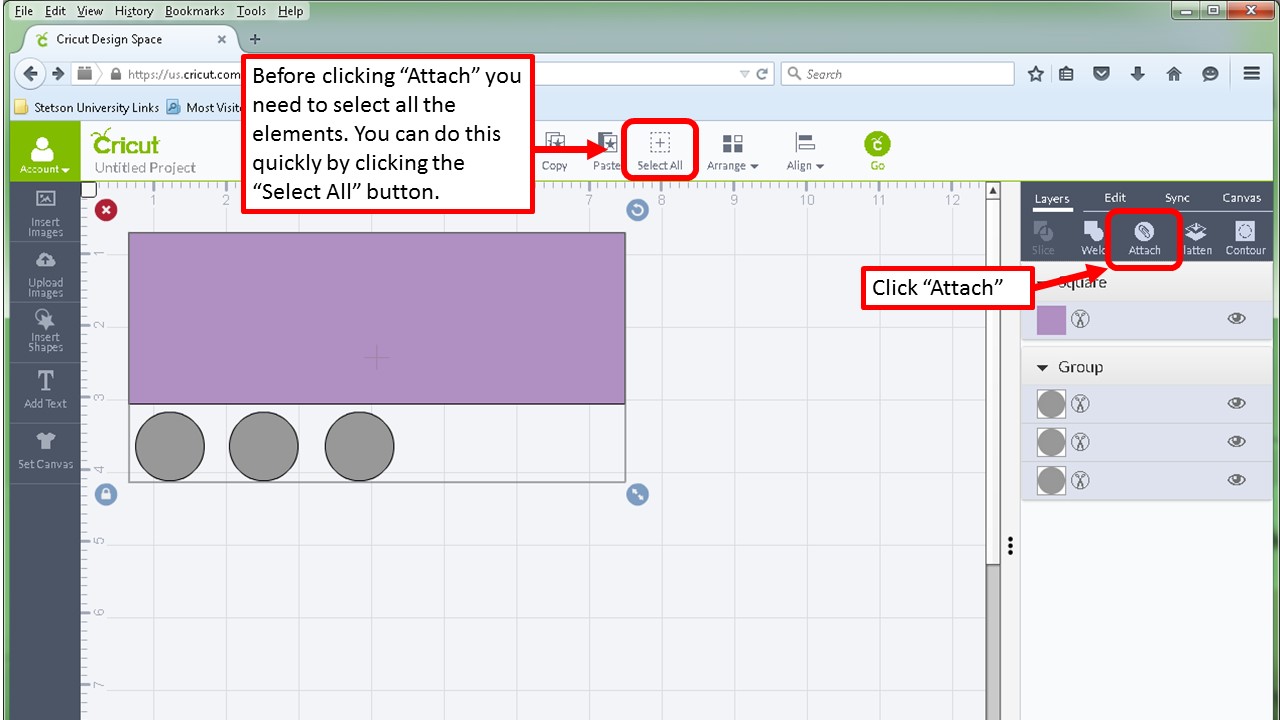To organize your design even further you can use the Arrange icon in the Upper Toolbar to keep objects appearing as they should. As you add objects they establish a heirarchy in the list to the right. Every element you place is "above" the element you placed last. So if you make a rather large element after many smaller ones and they are overlapping, the large element will block the view of the smaller elements. So to organize these elements you can "Group" objects together and Arrange elements/groups. Below you can see that selecting all the circles will "highlight" the corresponding elements in the right list. Also, the "Group" icon at the bottom right is highlighted letting you know this selection has the ability to be grouped.

After clicking "Group" you can see the elements are grouped together and the containing field is called "Group". If you need to undo this grouping you can click "Ungroup" to separate the elements again.

To change the heirarchy or order of appearance for the elements/groups then select the item(s) you want to move and then select "Arrange" and then the corresponding command. For the below image, selecting "Move To Back" will place the Group under the element "Square".


Now that we have gone over basics in the Cricut interface, let's go over the last step necessary before printing. The elements that are placed on the template need to be attached to the template to keep their placement for printing. If you do not attach you will see how these shapes are placed by the program before printing.

As you can see, if you do not attach the elements, then the program will treat your items as separate and try to conserve material by condensing the elements starting at the top left corner of the grid. In the picture you can see the left sidebar has the rectangle in a separate layer for another material. Each element treated separately.

To attach, "Select All" will select all the elements and then you click "Attach".

The items will be grouped together underneath an "Attached Set" container. This is how you know it is attached properly. If you find you missed an element or want to undo then choose the "Undo" button or the "Detach" button.

After clicking the Cricut "Go" button, you will see your attached items placed on the material as you laid them out in the template. change the size in the drop-down field to match the size of the material that you are using.

After choosing the size, you will see the "8.5 X 11" size orients itself to show you your size paper and the position on the adhesive grid. As you can see in the lower right hand corner , the "Sign In To Continue" button appears instead of the "Go" button if you are not currently signed in.



























